|
NOTE: Off-campus users who connect to the Internet
using a non-CSUN Internet Service Provider (ISP) such as AOL, EarthLink,
Prodigy, CompuServe, etc., as opposed to connecting to CSUN's Dial-up service
(i.e. 818-677-6700), pay special attention to those areas which are noted by "3rd party ISP users."
1. Locate your CSUN 'User ID' (example: jsmith), your password, and
your CSUN e-mail address (example:
john.smith@csun.edu).
3rd party ISP users: You will need
to acquire the following additional information from your Internet Service
Provider (ISP). CSUN's University Help Desk does not have access to this
information.
2. Open Microsoft Outlook 2003:
- Click 'start'
- Click Programs
- Click Microsoft Office
- Click 'Microsoft Office Outlook 2003'
3. Click 'Tools' located on the menu bar
4. Click 'Add a new e-mail account' and then click 'Next'
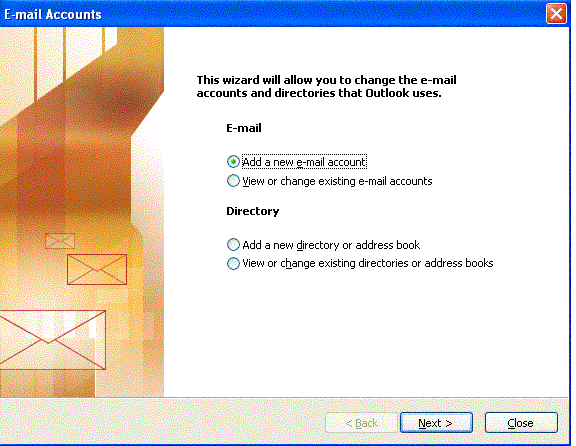
5. Select either POP3 or IMAP and then click 'Next'.
NOTE: POP3 should be used if you plan to download your email
from CSUN's email server to your local computer (i.e. the computer that
you are now configuring Microsoft Outlook 2003 on). IMAP
should be used if you will want to be able to view your email messages
from more than one computer. Keep in mind, all email messages
stored on the campus mail server under your account will count towards
your
email quota.
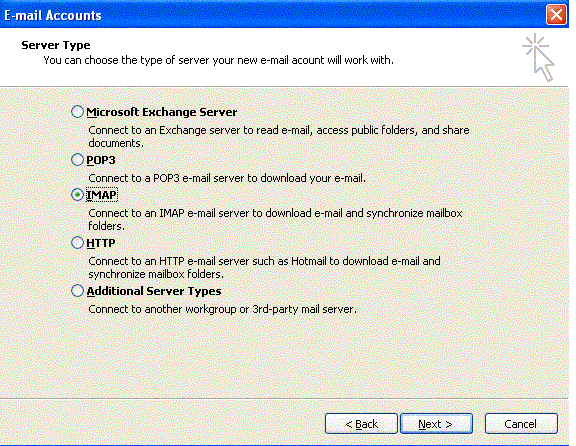
6. Input your personal information into the respective fields.
- 'Your Name': Input your full name (example: John Smith)
- 'Email Address': Input your CSUN Email address (example:
john.smith@csun.edu)
3rd party ISP users: Input the e-mail
address provided to you by your ISP as the 'Email Address'. Do no input
your CSUN email address here or you will be unable to send email to any CSUN
email recipient.
- 'Incoming mail server': If you selected POP on the previous screen, then input
pop.csun.edu. If you selected IMAP on the previous screen, then input
imap.csun.edu.
- 'Outgoing mail server (SMTP)': Input smtp.csun.edu
3rd party ISP users: Input the SMTP mail
server name provided to you by your ISP.
- 'User Name': Input your CSUN 'User ID' (example: jsmith or jsm12345)
- 'Password:' Input your CSUN User ID - password.
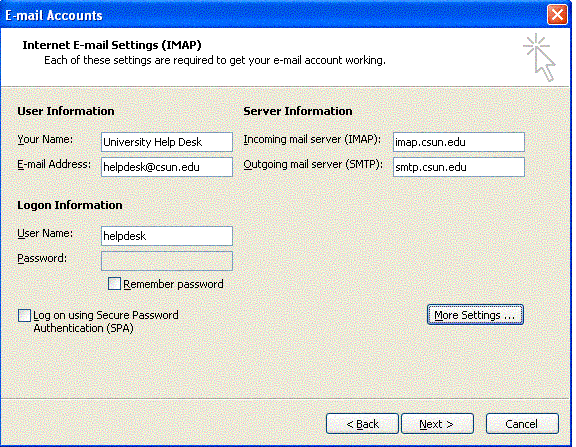
NOTE: Do NOT check off the box that
states 'Log on using Secure Password Authentication (SPA).
Click 'More Settings', then click the 'Outgoing Server' tab, then check the
box corresponding to 'My outgoing server (SMTP) requires authentication'.
NOTE: CSUN's outgoing mail server (i.e. the server you will send your
messages through) will first need to verify your User ID and password to send
your email.
3rd party ISP users: Do not check
the box corresponding to 'My outgoing server (SMTP) requires authentication'.
Instead, contact your ISP to find out if they require you to select this option
for their SMTP server.
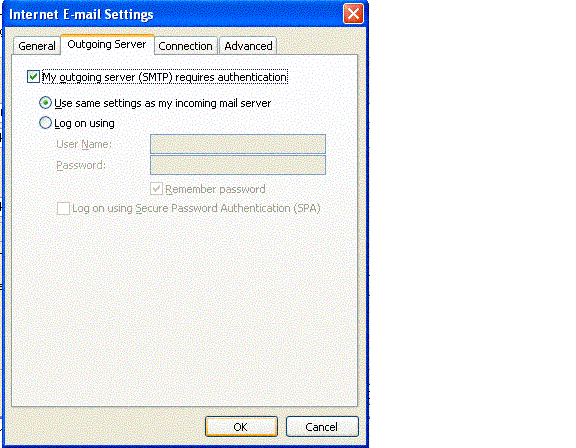
Click the 'Advanced' tab and place check marks in both boxes corresponding to
'This server requires an encrypted connection (SSL)'.
NOTE: imap.csun.edu, pop.csun.edu, and smtp.csun.edu, all
require a secure (SSL) connection. If you do not check these boxes, you
will be unable to send/ receive email via the aforementioned servers.
3rd party ISP users: Only check the box
corresponding to 'My outgoing server (SMTP) requires authentication' for the
Incoming server. Contact your ISP to find out if they will require you
to select this option for the Outgoing (SMTP) mail server.
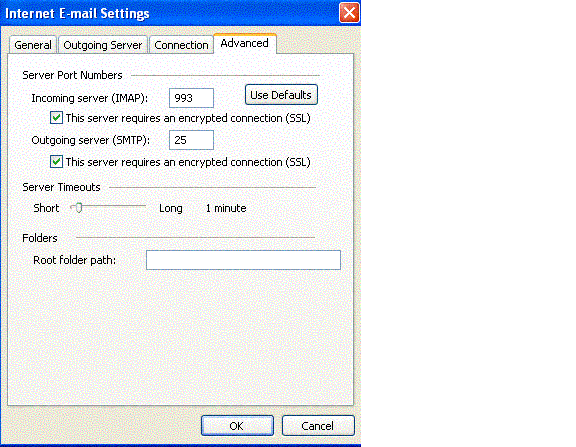
Click 'OK'
You should now see a the following page:
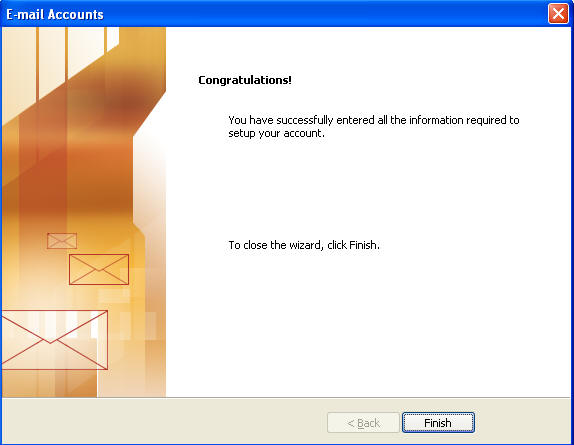
Click 'Finish'
|